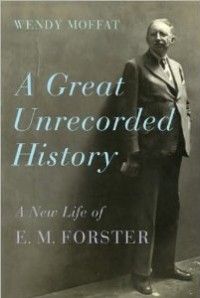
Edward Morgan Forster was born in London in 1879, six years before the Labouchère Amendment under which Oscar Wilde would be convicted of “gross indecency” and sentenced to hard labor. He lived until 1970, the year after the Stonewall riots.
By the time he was 45, Forster had long since made his literary reputation with A Room with a View, Howards End, and A Passage to India, along with two early novels and a dozen short stories. After that he published no more fiction, though he went on writing about literature and social topics, producing histories and biographies, giving lectures and making radio broadcasts, and ― in his eighties ― co-authoring his first and only libretto, for Benjamin Britten’s opera Billy Budd.
Forster’s intimates, however, always knew that there was one more novel. Begun in 1913 and revised over the course of the next six decades, Maurice was its own genre, a gay love story with a happy ending. As Forster wrote, “. . . a happy ending was imperative. I shouldn’t have bothered to write it otherwise. I was determined that in fiction anyway two men should fall in love and remain in it for the ever and ever that fiction allows.” From the beginning, Forster had shared Maurice with trusted friends, including eventually Christopher Isherwood, a generation Forster’s junior. In 1933, 1938, and again in 1948 Isherwood urged Forster to offer Maurice for publication, but Forster never felt the time was right. Finally, in 1952, he agreed to allow Maurice to be published after his death and, in 1971, it was. (An award-winning Merchant Ivory film followed in 1987.)
Not even Isherwood knew what other troves there were ― letters, diaries, essays, and photographs, all made accessible by the terms of Forster‘s will. Wendy Moffat spent ten years researching and writing this “great unrecorded history,” visiting archives from Yale University and the Huntington Library in Southern California to King’s College, Cambridge, and interviewing Forster’s surviving friends. (On her web page she notes that the title comes from a remark in one of Forster’s letters that his love affair with a young Egyptian man was a part of the larger, secret homosexual history.) Now, for the first time, a portrait emerges that joins the public humanist and man of letters with the lover of men who made his own way, resisting labels and inventing ways of sustaining the relationships that sustained him.
Includes sixteen pages of black and white photographs, a detailed index, extensive notes, and a lengthy bibliography.
Enthusiastically recommended for public libraries and for academic libraries with a concentration in English literature, gay history, or English history.
Reviewed by Joyce Meggett
Division Chief for Humanities
Chicago Public Library